-
Aurore du 9 septembre
-
Commentaires
9neoSamedi 12 Septembre 2015 à 10:4718 octobre mtnt...
EMERGING SUNSPOT: A new sunspot is emerging in the sun's southern hemisphere: movie. Since yesterday, AR2414 has more than quadrupled in size, and it has a 'beta-gamma' magnetic field that harbors energy for M-class solar flares. This could end a weeks-long stretch of low solar activity. Stay tuned. Solar flare alerts: text or voice
BIG AURORAS: Yesterday, Sept. 11th, a stream of solar wind and a minor CME hit Earth's magnetic field almost simultaneously. The result was a strong (G3-class) geomagnetic storm that sparked bright lights around the Arctic Circle. Veteran aurora photographer Ole Salomonsen says "it was not only the best display of the season so far, but maybe one of the best I have ever witnessed." He sends this self-portrait, an aurora silhouette, from Tromsø, Norway:
"I could not resist putting my self into the shot to show the scale of things," he says. "It looks out of proportion, but this is how it really was! The auroras were enormous."
During the peak of the storm, Northern Lights were seen in the USA as far south as New York, Wisconsin, and Washington State.
The storm is subsiding now, but it could flare up again as Earth passes through the wake of the CME. NOAA forecasters estimate a 70% chance of polar geomagnetic storms on Sept. 12th. Aurora alerts: text or voice
THE MORNING PLANET SHOW: Planets are gathering in the morning sky. Venus and Jupiter have recently emerged as morning "stars," rising in the east ahead of the sun, joining Mars in an array of lights that lets early risers view 1/3rd of the solar system at a glance. The display will continue--and improve--as autumn unfolds. This was the view on Sept. 10th:
Jean-Baptiste Feldmann took the picture from Nuits-Saint-Georges, France, just before sunrise on Thursday. At the time, the crescent Moon was passing by Venus en route to Jupiter, adding its luster to that of the planets. "It was a beautiful view," says Feldmann.
More scenes like this are in the offing. On Oct. 8th the crescent Moon will have another close encounter with Venus (sky map), followed one day later by a near miss of Jupiter and Mars (sky map). Every morning thereafter, the planets will converge until Oct. 24th - Oct. 29th when they fit within a circle only 5o wide (sky maps: #1, #2, #3, #4, #5, #6). Typical binoculars can see a patch of sky about 6o or 7o degrees wide. So when the triangle of planets shrinks to 5o, they will fit together inside a binocular field of view. Imagine looking through the eyepiece and seeing three planets--all at once.
By the time October comes to an end, the planetary triangle will start breaking apart. But there are still two dates of special interest: Nov. 6th and 7th (sky maps: #1, #2). On those increasingly wintry mornings, the crescent Moon will swoop in among the dispersing planets for a loose but beautiful conjunction.
Look east before sunrise. There's a lot to see.
Realtime Space Weather Photo Gallery
WILDFIRE AT THE EDGE OF SPACE: On Sept. 6th, Spaceweather.com and the students of Earth to Sky Calculus launched a space weather balloon equipped with radiation sensors. It was a regular flight, part of their weekly program to monitor cosmic rays in the atmosphere. En route to the stratosphere, cameras on the payload looked back and observed an enormous wildfire. This is the view from 109,600 feet:
The massive plume of smoke, pictured right, is coming from the Rough Fire, an 86,000 acre inferno raging through King's Canyon National Park in central California. Smoke from the fire is choking much of the Sierra Nevada mountain range where our space weather balloons are launched.
We've been using balloons and Geiger tubes to monitor cosmic radiation for the past two years. This particular balloon flight attempted something new: using microbes to measure radiation. Five different strains of yeast were flown alongside conventional radiation sensors to calibrate the microbes' response to cosmic rays. This kind of experiment could lead to new and improved techniques for measuring the biological effectiveness of high-altitude radiation.
HEY THANKS! The students of Earth to Sky Calculus wish to thank Dr. Mark Casafrancisco, whose generous donation of $500 made this research flight possible. Here is his business card floating in the stratosphere:
"Sending my business card to space not only allows me to support your student research program, but also shows how proud I am of our out-of-this-world family of stellar staff and pediatric dentists at Monarch Pediatric Dental Centre in Vancouver, BC, Canada!" he says.
Readers, if you would like to sponsor a research flight and see your photo at the edge of space, please contact Dr. Tony Phillips to make arrangements.
<table border="0" cellspacing="0" cellpadding="0" width="100%"> <tbody> <tr> <td> </td>
</tr>
</tbody>
</table>
<table border="0" cellspacing="0" cellpadding="0" width="412" height="43" background="site_images/fireballs_tablebg.jpg">
<tbody>
<tr>
<td width="53"> </td>
<td class="nearEarthAsteroidsText" width="359">All Sky Fireball Network</td>
</tr>
</tbody>
</table>
<table border="0" cellspacing="0" cellpadding="0" width="100%">
<tbody>
<tr>
<td height="11">
</td>
</tr>
</tbody>
</table>
<table border="0" cellspacing="0" cellpadding="0" width="412" height="43" background="site_images/fireballs_tablebg.jpg">
<tbody>
<tr>
<td width="53"> </td>
<td class="nearEarthAsteroidsText" width="359">All Sky Fireball Network</td>
</tr>
</tbody>
</table>
<table border="0" cellspacing="0" cellpadding="0" width="100%">
<tbody>
<tr>
<td height="11"> </td>
</tr>
</tbody>
</table>
</td>
</tr>
</tbody>
</table>
Every night, a network of NASA all-sky cameras scans the skies above the United States for meteoritic fireballs. Automated software maintained by NASA's Meteoroid Environment Office calculates their orbits, velocity, penetration depth in Earth's atmosphere and many other characteristics. Daily results are presented here on Spaceweather.com.
On Sep. 11, 2015, the network reported 25 fireballs.
(20 sporadics, 5 September epsilon Perseids)In this diagram of the inner solar system, all of the fireball orbits intersect at a single point--Earth. The orbits are color-coded by velocity, from slow (red) to fast (blue). [Larger image] [movies]
<table border="0" cellspacing="0" cellpadding="0" width="100%"> <tbody> <tr> <td> </td>
</tr>
</tbody>
</table>
<table border="0" cellspacing="0" cellpadding="0" width="412" height="43" background="site_images/neo_satellite_tablebg.jpg">
<tbody>
<tr>
<td width="53"> </td>
<td class="nearEarthAsteroidsText" width="359">Near Earth Asteroids</td>
</tr>
</tbody>
</table>
<table border="0" cellspacing="0" cellpadding="0" width="100%">
<tbody>
<tr>
<td>
</td>
</tr>
</tbody>
</table>
<table border="0" cellspacing="0" cellpadding="0" width="412" height="43" background="site_images/neo_satellite_tablebg.jpg">
<tbody>
<tr>
<td width="53"> </td>
<td class="nearEarthAsteroidsText" width="359">Near Earth Asteroids</td>
</tr>
</tbody>
</table>
<table border="0" cellspacing="0" cellpadding="0" width="100%">
<tbody>
<tr>
<td> </td>
</tr>
</tbody>
</table>
</td>
</tr>
</tbody>
</table>
Potentially Hazardous Asteroids (PHAs) are space rocks larger than approximately 100m that can come closer to Earth than 0.05 AU. None of the known PHAs is on a collision course with our planet, although astronomers are finding new ones all the time.
<table border="0" cellspacing="0" cellpadding="0" width="100%"> <tbody> <tr> <td> </td>
</tr>
</tbody>
</table>
</td>
</tr>
</tbody>
</table>
On September 12, 2015 there were 1608 potentially hazardous asteroids.
<table border="0" cellspacing="0" cellpadding="0" width="100%"> <tbody> <tr> <td> </td>
</tr>
</tbody>
</table>
</td>
</tr>
</tbody>
</table>
Recent & Upcoming Earth-asteroid encounters:
<table class="standardText" border="1" cellspacing="0" cellpadding="0" width="97%" bgcolor="#FFFFF0"> <tbody> <tr> <td class="asteroidTableColumnTitleText" width="27%">Asteroid</td> <td class="asteroidTableColumnTitleText" width="19%">Date(UT)</td> <td class="asteroidTableColumnTitleText" width="24%">Miss Distance</td> <td class="asteroidTableColumnTitleText" width="17%">Size</td> </tr> <tr bgcolor=""> <td height="17">2015 RW2</td> <td class="asteroidTableDatumText">Sep 4</td> <td class="asteroidTableDatumText">5.1 LD</td> <td class="asteroidTableDatumText">12 m</td> </tr> <tr bgcolor=""> <td height="17">1991 CS</td> <td class="asteroidTableDatumText">Sep 4</td> <td class="asteroidTableDatumText">62.1 LD</td> <td class="asteroidTableDatumText">1.4 km</td> </tr> <tr bgcolor=""> <td height="17">2015 RG2</td> <td class="asteroidTableDatumText">Sep 7</td> <td class="asteroidTableDatumText">6.4 LD</td> <td class="asteroidTableDatumText">20 m</td> </tr> <tr bgcolor=""> <td height="17">2015 RC</td> <td class="asteroidTableDatumText">Sep 8</td> <td class="asteroidTableDatumText">10.5 LD</td> <td class="asteroidTableDatumText">60 m</td> </tr> <tr bgcolor=""> <td height="17">2014 KS76</td> <td class="asteroidTableDatumText">Sep 14</td> <td class="asteroidTableDatumText">8.7 LD</td> <td class="asteroidTableDatumText">22 m</td> </tr> <tr bgcolor=""> <td height="17">2004 TR12</td> <td class="asteroidTableDatumText">Sep 15</td> <td class="asteroidTableDatumText">58.8 LD</td> <td class="asteroidTableDatumText">1.0 km</td> </tr> <tr bgcolor=""> <td height="17">2000 SM10</td> <td class="asteroidTableDatumText">Oct 2</td> <td class="asteroidTableDatumText">11.7 LD</td> <td class="asteroidTableDatumText">65 m</td> </tr> <tr bgcolor=""> <td height="17">2000 FL10</td> <td class="asteroidTableDatumText">Oct 10</td> <td class="asteroidTableDatumText">65.7 LD</td> <td class="asteroidTableDatumText">1.9 km</td> </tr> <tr bgcolor=""> <td height="17">2011 QD48</td> <td class="asteroidTableDatumText">Oct 17</td> <td class="asteroidTableDatumText">67.5 LD</td> <td class="asteroidTableDatumText">1.0 km</td> </tr> <tr bgcolor="#FFCEC1"> <td height="17">2014 UR</td> <td class="asteroidTableDatumText">Oct 18</td> <td class="asteroidTableDatumText">3.8 LD</td> <td class="asteroidTableDatumText">21 m</td> </tr> <tr bgcolor=""> <td height="17">2011 SE97</td> <td class="asteroidTableDatumText">Oct 18</td> <td class="asteroidTableDatumText">12 LD</td> <td class="asteroidTableDatumText">50 m</td> </tr> <tr bgcolor=""> <td height="17">2001 UY4</td> <td class="asteroidTableDatumText">Oct 21</td> <td class="asteroidTableDatumText">58.2 LD</td> <td class="asteroidTableDatumText">1.0 km</td> </tr> <tr bgcolor=""> <td height="17">2005 UL5</td> <td class="asteroidTableDatumText">Nov 20</td> <td class="asteroidTableDatumText">5.9 LD</td> <td class="asteroidTableDatumText">390 m</td> </tr> <tr bgcolor=""> <td height="17">2003 EB50</td> <td class="asteroidTableDatumText">Nov 29</td> <td class="asteroidTableDatumText">48.8 LD</td> <td class="asteroidTableDatumText">2.2 km</td> </tr> <tr bgcolor=""> <td height="17">2007 BG29</td> <td class="asteroidTableDatumText">Dec 1</td> <td class="asteroidTableDatumText">54.1 LD</td> <td class="asteroidTableDatumText">1.1 km</td> </tr> </tbody> </table>8ChristineSamedi 12 Septembre 2015 à 09:08Bien, Christine, si tu veux le septième ciel, je suis là!!!... Mouarf...
Désolé, j'ai pas pu m'empêcher.
C'est que je t'adore. Tu as l'air si tendre, si déterminée.
Smmmack!
6ChristineVendredi 11 Septembre 2015 à 22:34Sous ma ´Belgitude ´ le ciel est si beau ce soir..... Mon rêve d'enfant etait d'être astronaute, mais à l'époque ( ne riez pas ;) ) il n'y avait pas de place pour les femmes dans l espace, alors voila, depuis l'âge de 8 ans, on brise mes rêves.... J'ai tenté de prendre la tangente et je m'intéresse à l'astrologie, j'aimerais connaître les nom de toutes ces constellations ou des planètes...mais je me suis arrêtée aux signes astrologiques...c'est si beau, dans un monde si laid...briser les rêves des gens, ils font ca tres bien, mais nous sommes toujours la, ils n'ont pas tout brisé , c'est ca l'important... Bisous
Salut neo...
Ils coupent les gens de la Nature, du Soleil ( les traces d'avions ), du système solaire, de l'Univers...
Diviser et isoler pour mieux régner, c'est vieux comme le monde.
Maintenant, si les gens sont assez cons pour se laisser embarquer, alors qu'ils embarquent sur le Titanic, nous n'y pouvons absolument rien.
Bises.
4neoVendredi 11 Septembre 2015 à 19:35plus poétiquement,
nous avons aussi bénéficié dernièrement de la magnificence de ces cieux
et je me pose souvent la question suivante:
combien sommes nous à encore la voir,
à profiter du spectacle et à l'apprécier ???
lorsqu'à ces heures très matinales,
je croise d'autres automobilistes,
ils sont tjrs soient hagards,
soit rivés sur leur portable
soit pressés et roulant à vive allure...
alors,
auraient-ils toutes et tous oublié de vivre ?
3neoVendredi 11 Septembre 2015 à 19:24en attendant,
sont tjrs aussi prédictifs
et cela sonne encore comme un double avertissement...
Découverte d’un nouveau virus géant en Sibérie
Le Monde.fr avec AFP | 08.09.2015 à 08h09 • Mis à jour le 08.09.2015 à 09h49

Il a été baptisé « Mollivirus sibericum » parce qu’il est tout mou et qu’il a été trouvé en Sibérie. C’est un nouveau type de virus géant vieux de 30 000 ans. Il a été prélevé par des équipes russes dans l’extrême nord-est sibérien et possède plus de 500 gènes. Il se présente comme une coque oblongue de 0,6 micron de long. Pour se multiplier, il a besoin du noyau de la cellule hôte, ce qui n’est pas le cas du Mimivirus ou du Pithovirus qui se contentent du cytoplasme de la cellule.
L’analyse de l’ADN contenu dans l’échantillon de pergélisol a permis de confirmer la présence du génome intact de Mollivirus bien qu’à une concentration extrêmement faible.
Cette découverte réalisée par une équipe franco-russe démontre que les virus géants « ne sont pas rares et sont très diversifiés », déclare Jean-Michel Claverie, un des coordinateurs de l’étude sur ce nouveau virus publiée lundi dans les Comptes rendus de l’Académie des sciences américaine (PNAS).
Avec Mollivirus, cela porte à quatre le nombre de familles de virus géants identifiés depuis 2003, dont déjà deux retrouvés dans du permafrost, souligne M. Claverie, professeur de médecine à l’université Aix-Marseille et directeur du laboratoire « Information génomique et structurale » de Marseille.
Risques liés à la prospection dans le Grand Nord
Selon lui, cela doit conduire à s’interroger sur le risque éventuel que certains de ces virus géants ne se réveillent un jour si les hommes se mettent à trop remuer en profondeur les sous-sols des régions arctiques, à la recherche de précieux minerais ou de pétrole.
Le réchauffement climatique libère en effet de plus en plus de glaces marines polaires, ce qui permet d’accéder à la Sibérie orientale et du nord par des routes maritimes qui n’existaient pas. « Si on n’y prend pas garde et qu’on industrialise ces endroits sans prendre de précautions, on court le risque de réveiller un jour des virus comme celui de la variole qu’on pensait éradiqués », relève M. Claverie.
Les virus géants, qui ont un diamètre supérieur à 0,5 micron (0,5 millième de millimètre) sont aisément visibles avec un simple microscope optique, contrairement aux autres virus. On peut aisément les confondre avec des bactéries. Les chercheurs les font revivre en laboratoire en se servant d’amibes (organisme unicellulaire) comme cellules hôtes. Ils vérifient auparavant qu’ils ne sont pas pathogènes pour l’homme ou la souris.
Série de découverte de virus géants
L’an dernier, l’équipe, qui comprend aussi Chantal Abergel du CNRS, avait déjà réussi à faire revivre un autre type de virus géant conservé dans le même échantillon de permafrost et nommé Pithovirus.
Le monde scientifique, qui a longtemps pensé que les virus étaient forcément très petits et composés seulement d’une poignée de gènes, a découvert en 2003 avec surprise un premier virus géant, riche d’un millier de gènes et baptisé « Mimivirus » (famille des Megavirus). Une autre famille de virus géants, les Pandoravirus, avec 2 500 gènes, a été décrite dans la revue Science en 2013.
« Quelques particules virales encore infectieuses peuvent être suffisantes, en présence de l’hôte sensible, à la résurgence de virus potentiellement pathogènes dans les régions arctiques de plus en plus convoitées pour leurs ressources minières et pétrolières et dont l’accessibilité et l’exploitation industrielle sont facilitées par le changement climatique », relève le CNRS dans un communiqué.
2neoVendredi 11 Septembre 2015 à 19:22ouep...
et on voudrait nous tenir en laisse en nous obligeant
de multiples manières à vivre dans un monde fermé !!!
arrrgggghhhhhhhhhhhhhhhhgggggghhhhhhhhhhhh!!!!
1meloVendredi 11 Septembre 2015 à 13:24Magnifique pimpim Suivre le flux RSS des commentaires
Suivre le flux RSS des commentaires
 Ajouter un commentaire
Ajouter un commentaire
Sarko nous a menés au bord du précipice. Avec Hollande, nous faisons un grand pas en avant.

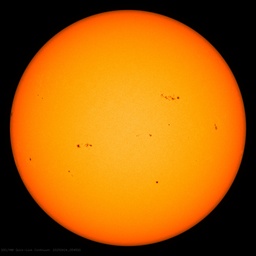
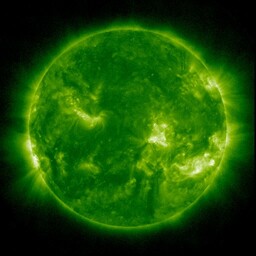
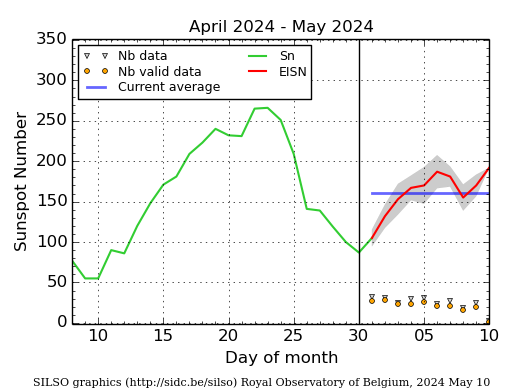






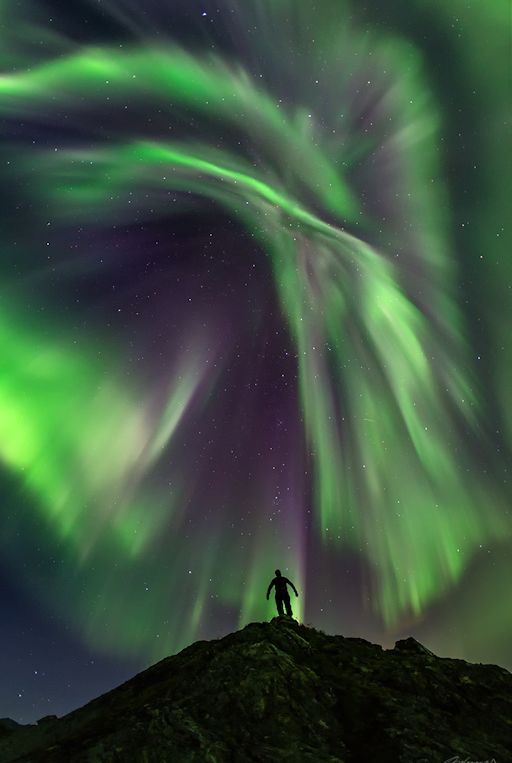
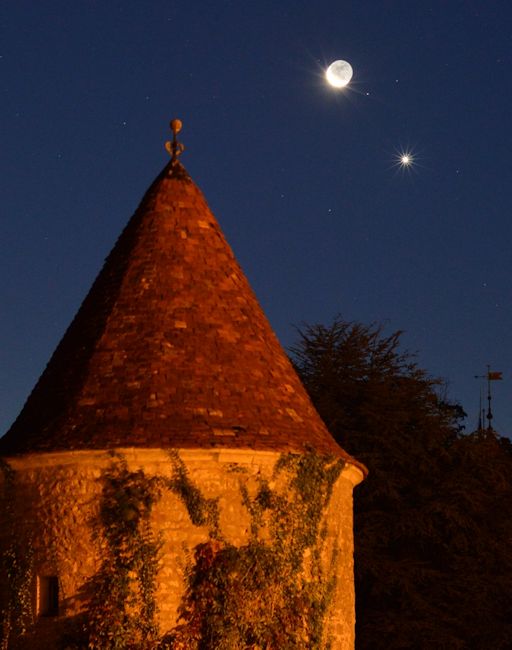
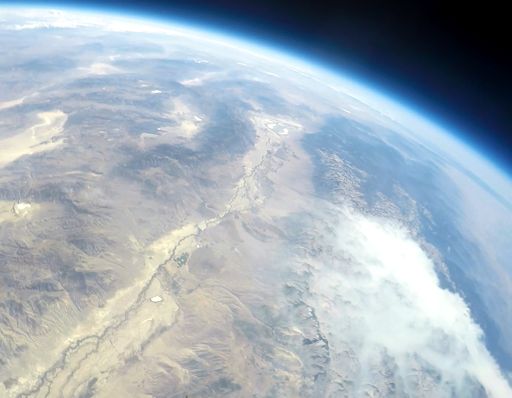
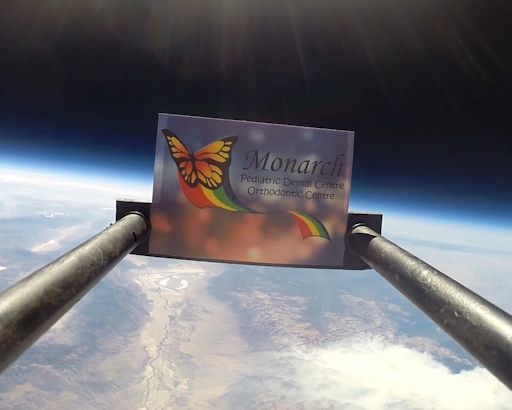



Le septième, c'est juste celui après le 6ème....